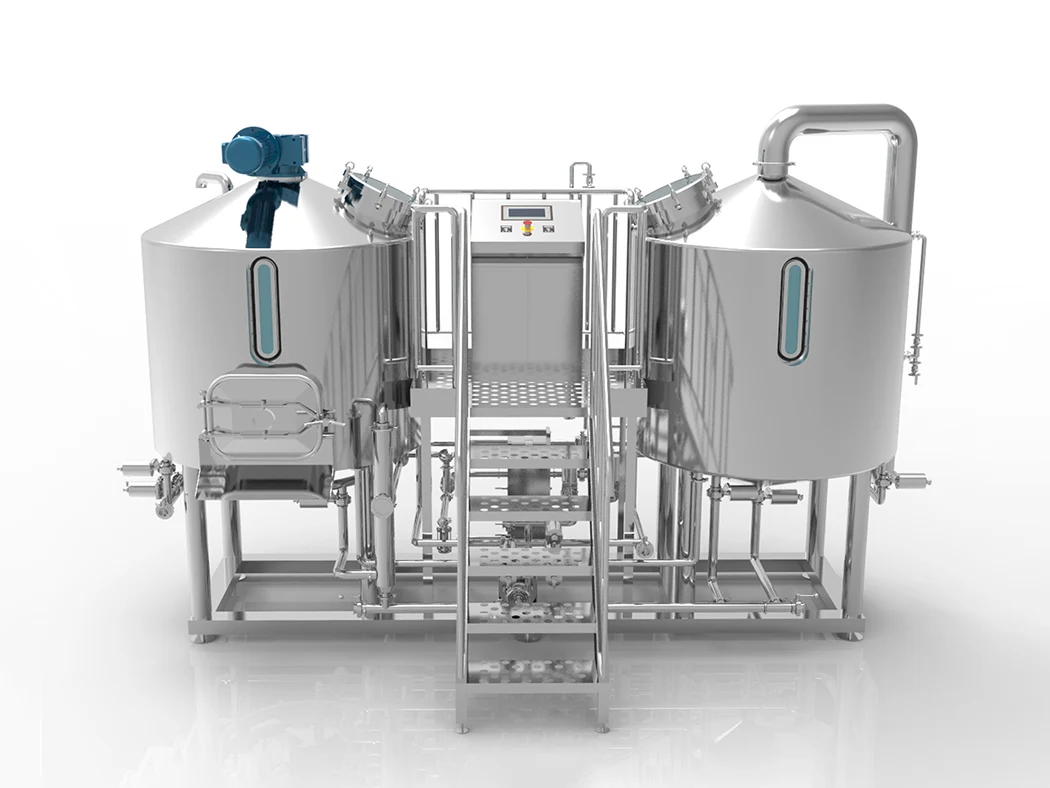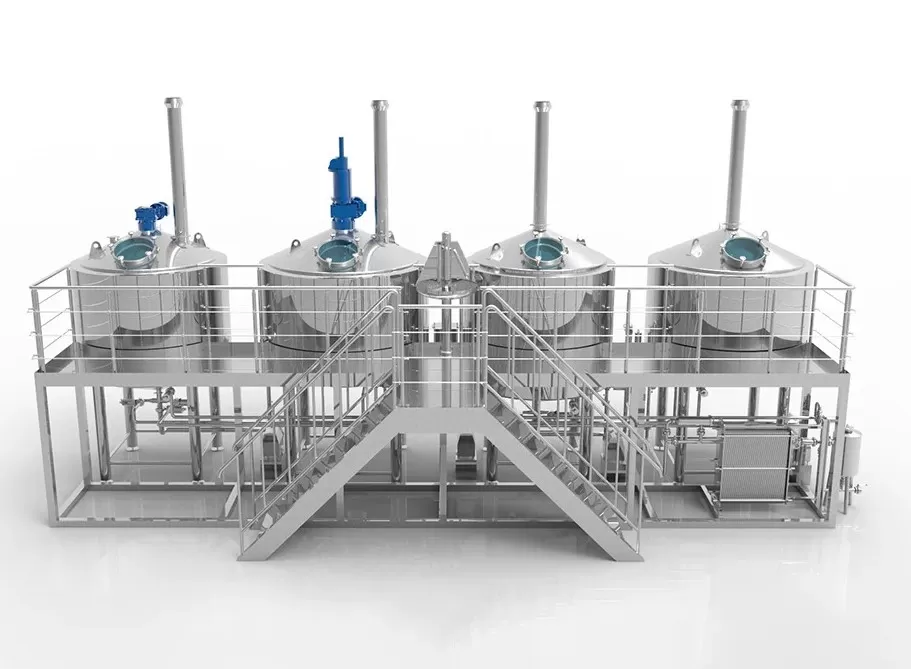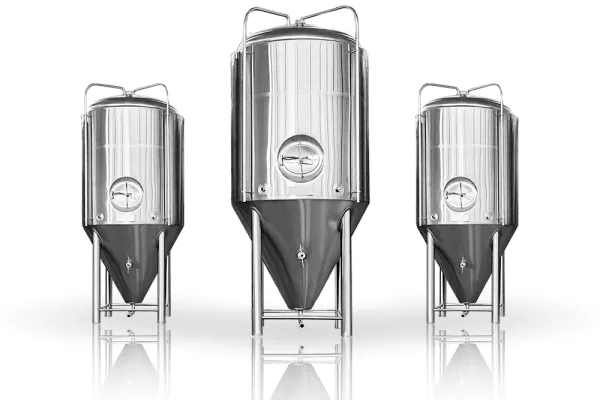Making beer is fun. You take grain, hops, water, and yeast. You make something good. But sometimes, it goes wrong. You work hard. You wait for weeks. Then you taste your beer. It tastes bad. This is a sad day for a brewer.
Why does beer go bad? Often, the problem is the fermenter. A fermenter is the home for your beer. It is where the yeast does its work. It is where your beer is born. Using a plastic bucket or a glass carboy is common. But it is not the best way. It can add bad tastes to your beer. It can let in air. Air is the enemy of beer. It makes beer taste like old, wet paper. This is a big problem.
It gets worse. Plastic buckets can get scratches. Bad germs can hide in the scratches. These germs can ruin your beer. They make it taste sour. Glass carboys are heavy. They can break. This is very dangerous. You can get hurt. And your beer is lost. You have to clean it all up. You feel frustrated. You wonder why your beer is not as good as the beer from a brewery. You have put in the time. You have bought good Malz, Hopfenund Hefe. Why is it not working? You are stuck in a cycle of okay beer, but you want great beer. This is very agitating.
But there is a better way. There is a tool that big breweries use. It is a secret weapon for making clean, clear, tasty beer every single time. It is called a konischer Fermenter. This is the solution. A beer conical fermenter can change your brew day. It can make you a better brewer. It gives you control. It keeps your beer safe from air. It lets you make beer that you are proud of. It is the step up you need to take your Heimbrauen from a hobby to an art.
What is a Conical Fermenter & Why Do You Need One?
What is this magic tool? A konischer Fermenter is a big tank for your beer. It has a cone shape at the bottom. It is an all-in-one brewing vessel. This means your beer can live in one place from start to finish. You do not have to move it. This is very important.
The power is in the cone. The cone is not just for looks. It has a very important job. When the yeast is done eating sugar, it gets sleepy. It falls to the bottom of the tank. Old bits of hops and grain, called trub, also fall down. The cone shape collects all this stuff in one small spot at the very bottom.
Why is this good? Because there is a door at the bottom of the cone. It is called a dump valve. You can open this door to let all the sleepy yeast and trub out. Your beer stays in the tank, clean and happy. This is a big deal.
Let’s look at the top 5 reasons you need one. This is why a conical fermenter stainless steel tank is better than a bucket or a carboy.
- Dump Trub, Harvest Yeast: With a bucket, the yeast and trub sit at the bottom. The beer sits on top of it. This can make off-flavors. With a conical, you just open the dump valve. The gunk is gone. You can also save the clean yeast. You can wash it and use it for your next beer. This is called yeast harvesting. It saves you money. Good yeast brands like Wyeast, White Labs, Fermentis, Lallemandund Imperial Yeastcan be used again and again.
- All-in-One Vessel: When you use a carboy, you often do a primary fermentation. Then you move the beer to a new carboy for secondary fermentation. This is called racking. Every time you move the beer, you risk letting in air. Air will ruin your beer. With a conical, you do not need to move the beer. It is a “unitank.” It does primary and secondary fermentation in one place. This is a huge step in making better beer.
- Better, Clearer Beer: Because you can dump the trub, your beer will be clearer. The final beer will not be hazy or muddy. It will look like beer from a pro brewery. You will have better beer clarity. This also means a cleaner taste.
- Pressurized Transfers: This is a game-changer. High-quality stainless steel conical fermenterscan hold pressure. This means you can use CO2 gas to push your beer out of the tank. You can push it right into your kegging system. No air will touch the beer. This is called a closed transfer. For beer styles with a lot of hops, like an IPA (India Pale Ale), this is the only way to keep the hop flavor fresh.
- Easier & Safer Cleaning: Fermenter aus rostfreiem Stahlare easy to clean. They have smooth walls. Germs have no place to hide. You do not have to worry about scratches like with plastic. And they will not shatter like glass. Many professional-grade systems even have a Clean-In-Place (CIP) This makes cleaning and sanitizing a breeze.
Making great beer means having control. A konischer Fermenter gives you that control. It takes away the guesswork and the risk. It is a key piece of Brauereiausrüstung for anyone serious about the craft.
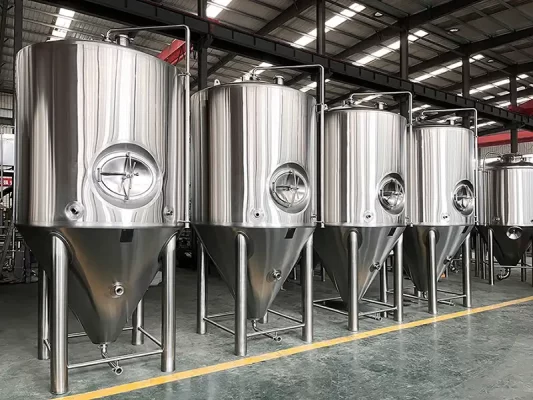
How to Choose the Right Conical Fermenter: A Buyer’s Guide
You are ready to buy a conical fermenter for sale. But there are many choices. There are big ones and small ones. There is Nano-Brauereianlagen and huge commercial beer tanks. There are ones made of plastic and ones made of steel. How do you pick the right one?
It feels like a big choice. If you pick the wrong one, you waste money. You might get a fermenter that does not do what you need. It might not have the right parts. Or it might be too hard to use. This can be more frustrating than using a bucket.
Let’s make it simple. We will look at the most important things. This guide will help you choose the best homebrew fermenter for your needs.
Critical Features to Look For
Not all conicals are the same. Some key parts make a big difference. When you are looking at a nano brewing system or a single fermenter, look for these features.
- Dump Valve: This is the valve at the very bottom of the cone. It lets you dump trub and harvest yeast. Look for a big one. A one-and-a-half-inch opening is good. A butterfly valveis a great type. It is easy to clean and does not clog.
- Regalarm: This is a bent tube on the inside of the fermenter. It sits just above the cone. You can turn it from the outside. This lets you find the sweet spot to pull clear beer out, leaving the yeast behind. It helps you get every last drop of good beer.
- Thermowell: This is a small metal tube that goes into the fermenter. You put a temperature probe inside it. It measures the temperature of the beer, not the air outside. This is key for Temperaturkontrolle. Yeast is happy at certain temperatures. A thermowell helps you keep the yeast happy.
- Pressurizable Lid: Can the fermenter hold pressure? This is a big yes or no question. Being able to hold even a little pressure is great for closed transfers. A pressurizable conical fermenteris a huge upgrade. It lets you do pressure fermentation, which can make very clean lagers.
Stainless Steel vs. Plastic: Which is Better?
This is a big debate. Let’s break it down.
- Rostfreier Stahl: This is the king. It is what all professional breweries use.
- Good things: It is super strong. It will last a lifetime. It is very easy to clean and sanitize. It will not hold flavors. It can hold pressure. Expert builders are needed to make them. For example, the team at Micet includes a production director with 13 years of experience and quality inspectors with 11 years of expertise. They ensure every weld is perfect. This commitment to quality, backed by a 3-year warranty on tanks, is why professionals choose steel.
- Bad things: It costs more money.
- Plastic (PET/HDPE): These are getting more popular for homebrewers.
- Good things: They cost less money. They are light and easy to move.
- Bad things: They can get scratched. Scratches can hide bacteria that spoil your beer. They can let a very tiny amount of air in over time. They usually cannot hold much pressure.
For a serious brewer who wants the best beer, a stainless steel conical fermenter is the clear winner. It is a “buy it once, cry once” purchase.
Essential “Upgrades” vs. “Nice-to-Haves”
You can get a lot of fancy parts for your All-in-One-Bierbrausystem. What do you really need?
- Essential Upgrades:
- Temperaturkontrolle: This is not an option. It is a must. Yeast makes bad flavors if it is too hot or too cold. You need a way to control the temperature. This could be a special jacket for the fermenter or cooling coils inside. A glycol-cooled conical fermentermit einer glycol chiller is the best system.
- Pressure Kit: If your fermenter can hold pressure, you need the parts to do it. This includes a pressure gauge and a special valve called a spunding valve.
- Nice-to-Haves:
- Casters (wheels): These make it easy to move your fermenter around.
- Muster Ventil: A small tap that lets you take a little beer out to taste it.
- Schauglas: A clear tube on the side that shows you how much beer is inside.
When you invest in equipment, you are investing in your beer. Choosing a partner that provides a complete solution is wise. A modern manufacturer like Micet provides everything from brewery design to equipment procurement. They offer customized brewery equipment solutions, so you get exactly what you need, whether it is for a small home setup or a large microbrewery setup.
How to Use a Conical Fermenter: Step-by-Step
You bought a shiny new stainless beer fermenter. Congratulations! Now it is time to make some amazing beer. How do you use it?
It might look complex. There are valves and clamps and tubes. The first time can feel a little scary. You do not want to mess up. A single mistake could mean a stuck valve or a leak. Or worse, you could forget a step and ruin your Würze.
Do not worry. Using a conical is easy once you know the steps. follow this guide. It will walk you through the process from start to finish. Soon, it will feel natural. You will wonder how you ever brewed without it.
Cleaning & Sanitizing: This is the most important step in all of brewing. A clean fermenter means clean beer.
- First, clean with a good cleaner like PBW (Powdered Brewery Wash). Use a soft cloth. Never use a rough sponge. It can scratch the steel.
- Rinse it very well with hot water.
- Next, sanitize. Use a no-rinse sanitizer like Star San. Make sure the sanitizer touches every part of the inside of the fermenter. Let it drain. Now it is ready for your beer.
Dumping Trub: After you put your wort in and add the yeast, fermentation will start. After 2-4 days, the most active part is over. Now you can dump the first bits of trub.
- Connect a small hose to your dump valve. Put the other end in a bucket.
- Open the valve slowly. A mix of yeast and dark gunk will come out.
- Close the valve as soon as you see a lighter color. You have now removed the worst gunk from your beer.
Hefe ernten: If you want to reuse your yeast, wait until the beer is done fermenting.
- Dump the first bit of dark trub, just like in the step above.
- Now, get a clean, sanitized jar. Open the valve again. A creamy, white yeast slurry will come out. Collect this in the jar.
- This is healthy yeast you can use for your next batch of beer. This is a common practice in a Kleinbrauereiand saves a lot of money
Dry Hopping: This means adding hops to the beer after it has fermented. This adds a lot of hop aroma, perfect for an IPA made with hops like Citra oder Mosaic.
- The best way is to use a special port on the top of the fermenter.
- If you can, it is good to add a little CO2 gas into the fermenter while you do this. This pushes the air out and protects your beer
Cold Crashing: To make your beer very clear, you can make it very cold. This is called a cold crash.
- Use your temperature control system to drop the beer’s temperature to near freezing.
- Hold it there for 24-48 hours. Everything left in the beer will drop down into the cone.
Closed, Pressurized Transfers: This is the best part. It is time to move your finished beer to a keg.
- Connect your CO2 tank to a gas post on the fermenter lid.
- Connect a liquid tube from the fermenter’s racking arm to your keg.
- Add a very small amount of CO2 pressure (2-3 PSI) to the fermenter.
- The pressure will gently push the beer into the keg. No air. No siphon. Just perfectly clean, clear beer moving to its new home. It is now ready for Karbonisierungin a keg or a bright beer tank.
These steps might seem like a lot, but they give you total control. This is how you make beer that is not just good, but great, batch after batch. It is the core of any solid Brauprozess.
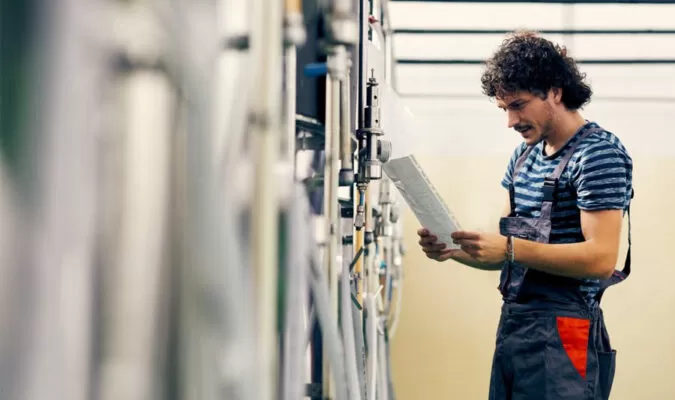
Data and Analysis
Seeing the numbers can help. Here are some tables. They show why a conical is a better choice. They look at the science and the money.
Table 1: Comparative Analysis of Fermenter Features
This table shows the big differences. It compares a steel conical to a glass carboy and a plastic bucket.
| Merkmal | Conical Fermenter (Stainless Steel) | Glass / Plastic Carboy | Kunststoff-Eimer |
| Primary & Secondary in One Vessel | Yes. No moving the beer means less risk of air damage. | No. You must move the beer to a new vessel. | No. You must move the beer. |
| Trub & Yeast Removal (In-Process) | Yes. The cone shape and dump valve work perfectly. | No. The beer must be moved off the yeast. | No. The beer sits on all the yeast and gunk. |
| Pressurizable Transfers | Yes. Use CO2 gas to move beer safely. | No. You have to use a siphon, which adds air. | No. Must use a siphon. |
| Temperaturkontrolle | Excellent. A thermowell gives a true reading of the beer temp. | Fair. Hard to get a good reading. | Poor. Plastic does not transfer heat well. |
| Durability & Safety | Excellent. Steel will not break or scratch easily. | Poor (Glass). Can break and cause bad cuts. | Fair. Scratches easily, which can hide germs. |
| Reinigung | Easy. Smooth steel walls are simple to clean. | Difficult. The small neck makes it hard to scrub. | Easy. The wide top makes it easy to reach inside. |
| Anfängliche Kosten | Hoch | Low to Moderate | Niedrig |
Table 2: Case Study — Impact of Conical Features on Brewing Outcome
This table shows how each feature helps your beer. It connects the part to the result.
| Case Feature | Action / Process Enabled | Impact on Beer Quality & Process |
| Conical Shape & Dump Valve | You can dump out the trub. You can save the yeast. | Improved Clarity: Beer looks better and tastes cleaner. Yeast Re-use: You save money on yeast for your next batch. |
| Unitank (All-in-One Fermentation) | Beer stays in one home. No need to move it. | Reduced Oxidation: This is the #1 killer of beer flavor. The unitank prevents it. |
| Pressure Capability | You can do pressurized transfers. You can do natural carbonation. | Zero Oxygen Exposure: This is the best way to keep hoppy beers fresh. Time Savings: Ferment and carbonate in one tank. |
| Thermowell & Cooling Coils | You can control the temperature perfectly. | Consistent Results & Off-Flavor Prevention: Happy yeast makes clean beer every single time. |
| Sanitary Fittings (Tri-Clamp) | All the parts come off for easy cleaning. | Improved Sanitation: No threads for germs to hide in. This means a lower risk of infected beer. |
FAQ: Conical Fermenter Questions Answered
Here are some common questions. People ask these a lot. Let’s answer them.
Q: Do I still need a secondary fermenter?
- A: No. The conical fermenter is your primary and secondary fermenter. It does both jobs. This is one of its biggest benefits. You save time, cleaning, and risk.
Q: How much bigger should the fermenter be than my batch size?
- A: You need extra space. This space is called Kopfraum. During fermentation, a big foam called krausen forms on top of the beer. You need room for it. A good rule is to have a fermenter that is 20-30% bigger than your batch of beer. For a 5-gallon batch, a 7-gallon conical fermenteris perfect.
Q: Is a conical fermenter worth the cost for a beginner?
- A: It can be. It costs more money to start. But it makes the process easier. It removes some of the hard steps where beginners make mistakes. It helps you make better beer, faster. If you are serious about brewing, it is a very good investment.
Conclusion: Is a Conical Fermenter Your Next Upgrade?
You face a problem. You want to make amazing beer. But your simple equipment holds you back. It introduces risks. Oxidation, infection, and poor temperature control are constant worries. They turn your hard work into disappointment. You spend your time and money on good ingredients from maltsters like Briess Und Weyermann, but the final beer is just average.
This is a frustrating place to be. You see others making clear, delicious Craft-Bier. You read about techniques like Lagerhaltung Und cold crashing. But your plastic bucket just can’t do it right. You are limited by your tools.
The solution is clear. Upgrading to a konischer Fermenter is the single biggest step you can take to improve your beer. It is more than just a piece of Craft-Bier-Ausrüstung; it is a gateway to better brewing.
- It saves timeby combining fermentation stages.
- It reduces risksof flawed beer from oxidation and infection.
- It gives you unmatched controlover temperature, clarity, and yeast management.
Choosing the right partner for such an important upgrade is critical. You need more than just a tank; you need a solution backed by experience. Micet Group has over 15 years of industry leadership. They have helped set up over 1,000 breweries in 86 countries. Their team, from CEO Nancy with her deep customer understanding to the service team with 22 years of design experience, is focused on one thing: helping brewers succeed. They provide not just Gärbehälter, but complete, customized commercial brewing systems built with precision and care. Whether you need a small cider fermenter or a full set of microbrewery equipment for sale, their expertise ensures you get the highest quality.
A conical fermenter is your next step. It is the tool that will help you brew the beer you have always dreamed of making. It is an investment in quality, consistency, and pride. And for those looking to turn a passion into a business, exploring options for nano brewery equipment for sale can be the start of an exciting new chapter.

